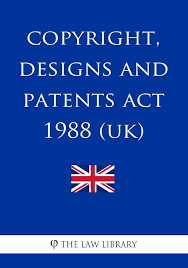Clarifying Our Role: We’re Not Lawyers, But We Can Guide the Way
I was responsible for legal research, preparing materials to support Bright Side with intellectual property and publicity compliance issues. However, I’ve always been fully aware that we are not legal advisors and cannot provide specific legal advice.
What we can do is:
- Identify potential legal risks, and
- Offer directional guidance.
Ultimately, it is essential that the client seeks professional legal counsel when needed.
What My Team Taught Me: From “Thinking Hard” to “Thinking Wider”
At first, I thought I had already covered all the major legal risks. But one simple comment from a teammate made me instantly realise that my perspective was still limited:
“Their current publicity seems overly cautious — maybe it’s because they’re unsure about the legal boundaries.”
This question sparked two key insights for me:
- Law isn’t just a tool for risk prevention — it can also become an invisible barrier that holds a brand back from expressing itself.
- Our job is to uncover the constraints the client may not even be aware of — not just to list out laws and regulations.
Legal Risk Map and What We Can Suggest
After reviewing and categorising relevant laws from the UK, EU, and Ireland, I organised the findings.
- Identifying Potential Intellectual Property (IP) Risks
- Many of Bright Side’s projects are co-produced, which often leads to unclear IP ownership — this may affect the legality of promotional use.
- Using visual content, brand elements, or other media on social platforms without proper authorisation can pose infringement risks.
Our Suggestions:
- Ensure all content used for publicity has clearly defined IP usage rights written into contracts.
- Pay close attention to legal differences when targeting international markets, especially the EU and Ireland.
- Define publicity rights at the start of collaborations to avoid future disputes. into a four-part framework that can be clearly presented to the client
- Reviewing Existing Contracts: Legal Foundations
We recommend allocating a small legal budget to have existing contracts reviewed, with special focus on publicity and authorisation clauses.
Review priorities include:
- Whether project outcomes can be used on social media
- Whether third-party platforms allow branding and co-promotion
- Improving Future Contract Structures
Include clear “publicity rights clauses” in all future agreements
- Specify IP ownership and scope of use — consider negotiated co-branding or shared display rights
- Encourage clients to use in-progress project content (e.g. teaser clips) to improve social media frequency and build a stronger sense of “real-time” engagement
- Legal References, Risk Notes & Useful Sources (Selection)
UK Copyright, Designs and Patents Act 1988: Without a formal copyright transfer, Bright Side has no legal right to promote joint project content.
Trade Marks Act 1994 (UK) / 1996 (Ireland): Unregistered brand elements are vulnerable to imitation or trademark theft.
UK GDPR & Data Protection Act 2018: When social media content involves identifiable people or partner logos, image rights and usage permission must be secured.
Directive (EU) 2019/790: All published content must be properly licensed to avoid takedowns from EU-based platforms.
What’s Beneath Legal Issues? Finance May Be the Real Barrier
While identifying potential legal risks, I began to realise that the core challenge may not be a lack of knowledge or awareness — but rather, cost.
Registering trademarks, revising contracts, or seeking legal advice all require financial resources. At this stage, however, Bright Side is still largely self-funded by its founders, which may limit their ability to proactively address these legal needs.



Leave a Reply